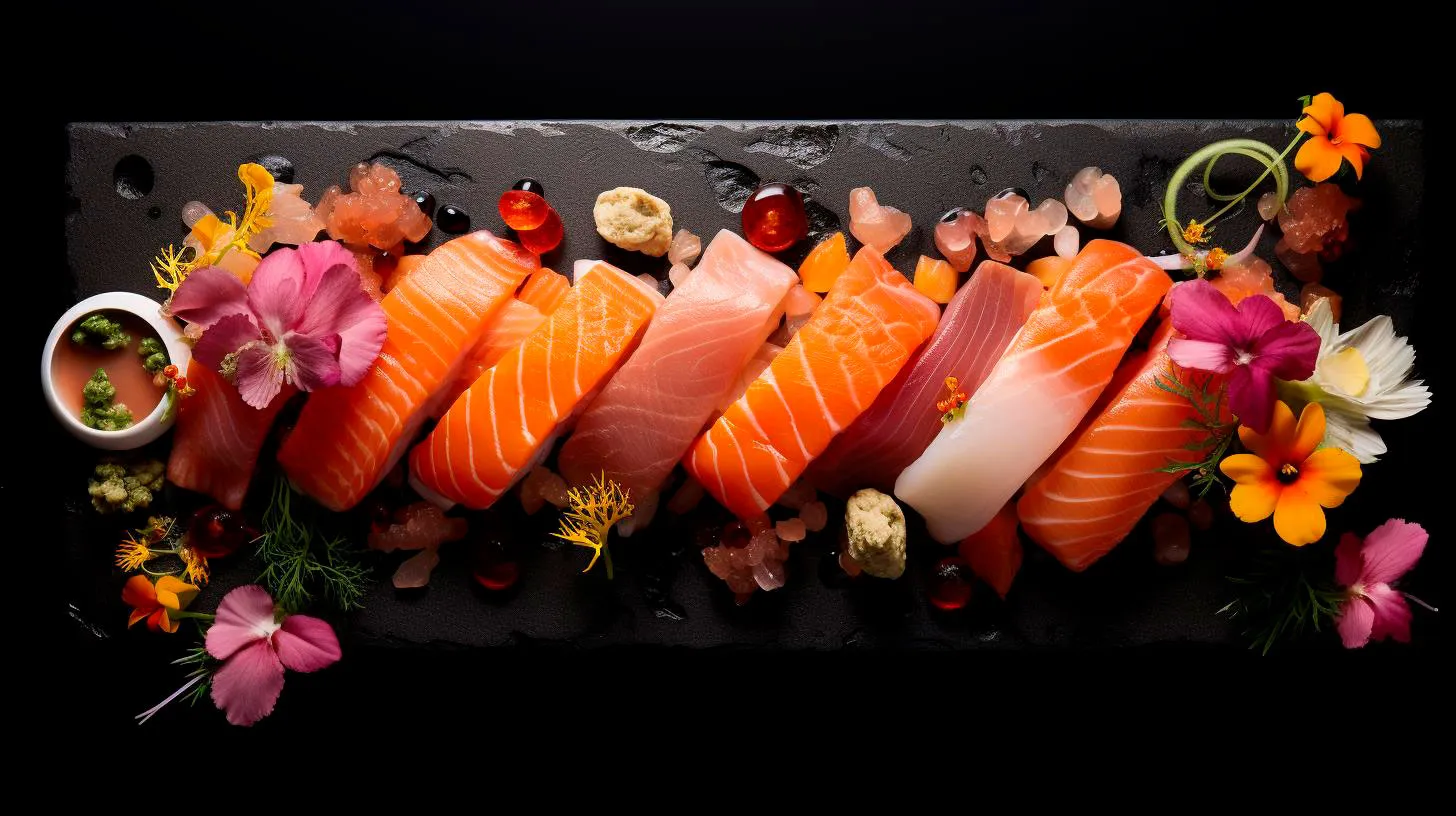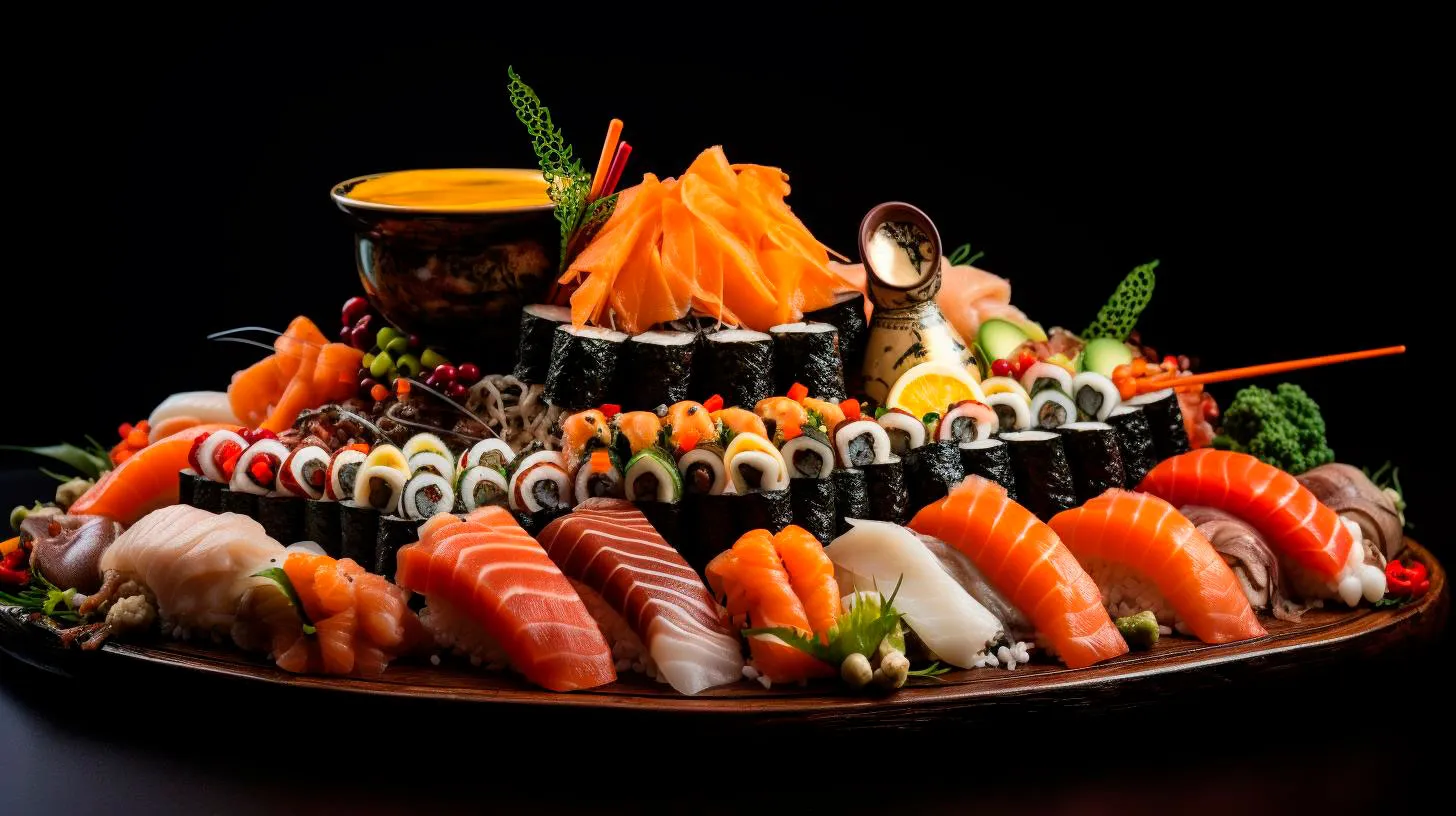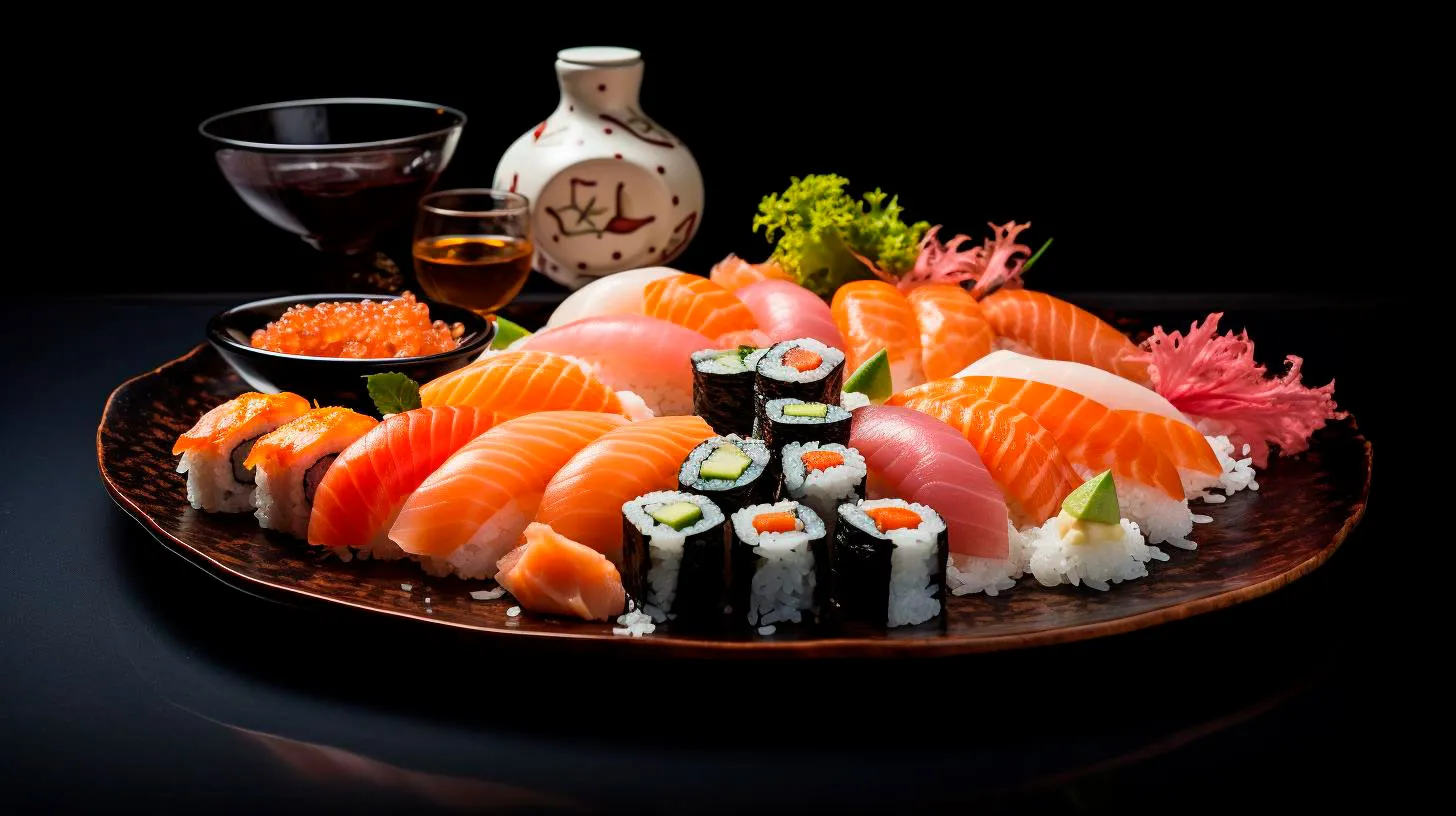The Significance of Tea in Japanese Literature
In this blog article, we explore the profound significance of tea in Japanese literature and how it has shaped the literary landscape of the nation.
Tea in Japan: A Cultural Phenomenon
Before delving into the literary significance of tea, it is essential to understand the role of tea in Japanese culture. The practice of tea-drinking, known as chanoyu or sado, has a rich history dating back to the 9th century. It evolved into a highly ritualistic and meditative art form, heavily influenced by Zen Buddhism. The Japanese tea ceremony, with its emphasis on simplicity, harmony, and respect, became a cornerstone of Japanese aesthetics and philosophy.
The deep cultural connection with tea naturally found its way into Japanese literature, showcasing a myriad of themes and symbolic interpretations. Let’s explore some of the key ways tea manifests in Japanese literary works:
Tea as a Symbol of Tranquility and Simplicity
Japanese literature frequently uses tea to symbolize tranquility and simplicity, two aspects deeply rooted in the tea ceremony. By incorporating tea-related metaphors, authors convey a sense of inner calm and harmony amidst the chaos of life. In works such as Matsuo Basho’s haikus or the gentle stories of Yasunari Kawabata, tea serves as a medium through which the characters seek solace and find moments of peace.
Key Takeaway:
- Tea symbolizes tranquility and simplicity in Japanese literature, bringing moments of calmness and peace amidst the chaotic nature of life.
Tea as a Social Connector
Japanese tea ceremonies are not just about enjoying a cup of tea; they serve as a platform for social bonding and harmony. Similarly, in Japanese literary works, tea gatherings often become a catalyst for interactions, dialogues, and revelations among characters. The act of serving tea becomes a means to establish connections, resolve conflicts, and deepen understanding between individuals. Authors skillfully use tea as a backdrop to illustrate the complexities of human relationships.
Key Takeaway:
- Tea gatherings in literature serve as catalysts for social interactions, fostering connections and resolving conflicts between characters.
Tea as a Reflection of Nature
Tea ceremonies typically take place in serene settings, surrounded by beautiful landscapes or meticulously designed gardens. This deliberate placement of tea within nature offers a deep aesthetic connection between the two. In literature, tea serves as a window into the beauty of the natural world. Writers often utilize tea scenes to vividly describe the sights, sounds, and scents of nature, evoking a sensory experience for the readers.
Key Takeaway:
- Tea scenes in literature provide an exploration of the beauty of nature, allowing readers to immerse themselves in sensory experiences.
The Legacy of Tea in Japanese Literature
Tea has left an indelible mark on Japanese literature, influencing various genres and styles. Since its inception, tea has been intricately woven into the fabric of Japanese identity and has served as an endless source of inspiration for countless writers.
From the haiku master Matsuo Basho to the Nobel Prize-winning novelist Yasunari Kawabata, tea has been a recurring motif, enabling the exploration of human emotions, societal dynamics, and the ephemeral nature of existence. Tea represents timeless values and ideals that resonate with readers both within and beyond Japan.
In conclusion, tea in Japanese literature goes far beyond a mere beverage. It serves as a powerful symbol of tranquility, social connection, and a deep appreciation for nature. By incorporating tea-related themes and metaphors, Japanese authors have been able to create immersive and captivating literary landscapes. So, the next time you read a Japanese novel or poem, keep an eye out for the subtle ways tea makes its presence felt, enriching the narrative and offering a glimpse into the cultural and philosophical heritage of Japan.
Exploring the Role of Tea in Japanese Literary Tradition
In this article, we will delve into the historical and cultural significance of tea in Japanese literature, exploring its influence and impact on some of the most renowned works in the country’s literary canon.
The Ritual and Philosophy of Tea
Tea has always held a prominent place in Japanese society, not just as a beverage, but as a way of life. The tea ceremony, which evolved as a form of entertainment and hospitality, has deep connections to spirituality and Zen Buddhism. Attention to detail, mindfulness, and harmony are integral to the tea ceremony, and these principles have found their way into Japanese literature.
Japanese writers often use the tea ceremony as a metaphor to explore themes of harmony, social interactions, and personal growth. The ritualistic nature and disciplined approach to tea preparation are seen in the way characters interact and behave in literary works. The tea ceremony becomes a symbol of life’s transient nature and the pursuit of simplicity, reverence, and self-awareness.
Tea and Haiku
When discussing Japanese literature, it is impossible to ignore the significance of haiku, a form of poetry characterized by its brevity and focus on nature. Tea plays a crucial role in haiku, acting as a catalyst for moments of reflection and inspiration. Haiku often portrays scenes of tea preparation, tea gatherings, or the serene and contemplative atmosphere surrounding the tea ceremony.
Tea-related imagery in haiku captures the essence of Japanese aesthetics and the beauty of everyday objects. The simplicity, tranquility, and harmony associated with the tea ceremony find their way into haiku, emphasizing the intimate connection between tea and literature. Haiku provides a window into Japan’s cultural fabric, serving as a timeless vessel for capturing the essence of tea and its impact on the human spirit.
Tea and Japanese Novels
Japanese novels have also explored the role of tea in various narratives, using it as a catalyst for character development or as a backdrop against which stories unfold. Many famous Japanese authors have integrated tea and tea-related imagery into their novels, creating a vivid depiction of Japanese society and its values.
In Yasunari Kawabata’s celebrated novel, “The Old Capital,” the importance of tradition, family, and culture is explored through the protagonist’s pursuit of becoming a tea master. The novel immerses readers in the beauty and symbolism of the tea ceremony, highlighting its power to transform and heal.
Yukio Mishima, another prominent Japanese author, often used tea ceremonies in his works as a metaphor for the duality of human nature and the struggle between tradition and modernity. Tea ceremonies serve as a backdrop for intense introspection and conflict within his characters.
Key Takeaways
- Tea has long been an integral part of Japanese culture and finds its way into literature as a symbol of harmony, simplicity, and reverence.
- The tea ceremony, with its emphasis on mindfulness and attention to detail, serves as a metaphor for life’s transient nature and personal growth.
- Tea plays a significant role in haiku, capturing the beauty of everyday objects and the essence of Japanese aesthetics.
- Japanese novels often explore the role of tea as a symbol of tradition, family, and cultural values, highlighting its transformative power.
In conclusion, tea has left an indelible mark on Japanese literary tradition. It has provided a canvas for writers to explore themes of harmony, introspection, and cultural identity. Whether through the tea ceremony, haiku, or the backdrop of a novel, tea’s influence on Japanese literature is undeniable. It continues to be a source of inspiration, inviting readers to embark on a journey into the heart and soul of Japan’s rich cultural heritage.
Tea: A Timeless Symbol in Japanese Literature
This article delves into the rich history and symbolism of tea in Japanese literature, exploring its impact on characters, plotlines, and overall themes.
The Historical Roots of Tea in Japanese Literature
Tea, known as “ocha” in Japan, arrived in the country during the 9th century, brought by Buddhist monks who travelled from China. Over the centuries, tea became an integral part of Japanese culture, going beyond a simple beverage to symbolize harmony, tranquility, and refinement. Its profound influence on aesthetics and philosophy played a significant role in shaping Japanese literature’s portrayal of tea.
Some of the most iconic works of Japanese literature feature tea as a central element, showcasing its multidimensional symbolism. Notably, the “The Tale of Genji” by Murasaki Shikibu, one of the earliest novels in human history, describes tea ceremonies with meticulous attention to detail, emphasizing the key themes such as elegance, beauty, and the nuanced connections between characters.
Tea Ceremonies as Literary Devices
Tea ceremonies, or “chanoyu,” are deeply ingrained in Japanese literature, often serving as pivotal moments to advance the plot or delve into the emotional states of characters. These ceremonies are used to convey subtle messages, maintain cultural traditions, and explore social dynamics. They provide a lens through which authors can depict the intricacies of Japanese society and the inner thoughts of their characters.
The tea ceremony, with its emphasis on modesty, simplicity, and respect, offers a perfect backdrop for exploring cultural norms and interpersonal relationships. Through delicate tea preparation, pouring, and sharing, authors can express a wide range of emotions, from harmony and connection to tension and conflict. Tea ceremonies are also used to underline power dynamics, as etiquette and observance play significant roles in social hierarchies.
The Symbolism of Tea in Japanese Literature
Tea is often used as a symbol to convey profound meanings within the context of Japanese literature. It can represent purity, grace, and inner peace, reflecting the Zen Buddhist philosophy that greatly influenced tea culture in Japan. Its presence in a narrative can signify a break from the chaos of daily life or serve as a catalyst for emotional introspection.
Additionally, tea is linked to seasonal changes in Japanese literature, drawing inspiration from the concept of “wabi-sabi.” This aesthetic appreciation of imperfections, impermanence, and the beauty of simplicity is reflected in the appreciation of tea. Tea ceremonies often incorporate seasonal elements such as flower arrangements and calligraphy, highlighting the connection between nature and the human experience.
Key Takeaways
- Tea plays a central role in Japanese literature, reflecting the deep cultural and historical significance it holds in society.
- Tea ceremonies serve as literary devices to explore emotions, interpersonal dynamics, and social norms.
- The symbolism of tea represents purity, grace, introspection, and the appreciation of imperfections.
- Tea is closely tied to the changing seasons, aligning with the aesthetic concept of “wabi-sabi” and the beauty of simplicity.
- Awareness of tea’s symbolism enhances the reader’s understanding and appreciation of Japanese literary works.
In conclusion, tea’s presence in Japanese literature goes beyond a simple drink. It serves as a conduit for exploring themes of tradition, elegance, spirituality, and introspection. From delicate tea ceremonies to the symbolism it represents, tea holds a timeless position in Japanese literary works, imparting both aesthetic pleasure and profound philosophical insights.
The Enduring Presence of Tea in Japanese Literature
In this blog post, we will explore the enduring presence of tea in Japanese literature and unravel its profound symbolism.
The Symbolism of Tea
In Japanese literature, tea is often used as a metaphor for life itself. The careful preparation and the rituals associated with the tea ceremony mirror the delicate nature of existence. Like a cup of tea, life is a blend of bitter and sweet moments, and understanding this duality is essential to finding balance and harmony.
Tea is also frequently used as a symbol of hospitality and friendship. The act of serving tea to someone is considered a gesture of goodwill and an expression of respect. It fosters a sense of connection and intimacy between the characters and often signifies the bond between them.
The Role of Tea in Haiku Poetry
Haiku, a traditional form of Japanese poetry, often incorporates tea as a subject. These short poems capture a single moment in nature and evoke emotions with few words. Tea is sometimes used to represent a pause from the chaotic world, offering solace and tranquility.
Here is an example of a haiku that features tea:
- In the stillness, steam rises
- A cup of tea, heart at ease
- Nature’s embrace
This haiku portrays the act of enjoying a cup of tea as a quiet moment of reflection and a connection with nature.
Tea in Traditional Japanese Literature
Tea plays a prominent role in many classic Japanese literary works. One such example is Yasunari Kawabata’s novel “The Sound of the Mountain.” The protagonist, Shingo, finds solace and insights through his tea sessions, symbolizing his longing for a deeper understanding of life.
Another notable work is Junichiro Tanizaki’s “The Makioka Sisters,” where tea serves as a crucial element in showcasing the cultural traditions and social dynamics of Japanese society during the early 20th century.
Key Takeaways
- Tea is not just a beverage but a profound symbol in Japanese literature.
- Tea represents the delicate nature of life and the balance between bitter and sweet moments.
- It serves as a symbol of hospitality and friendship, fostering connections between characters.
- In haiku, tea often represents a pause from the chaotic world and offers tranquility.
- Tea plays a significant role in classic Japanese literary works, such as “The Sound of the Mountain” and “The Makioka Sisters.”
In conclusion, the enduring presence of tea in Japanese literature speaks to its deep-rooted cultural significance. Through its symbolism, tea offers readers insights into the complexities of life, the value of human connections, and the importance of finding moments of tranquility. So, the next time you enjoy a cup of tea, remember its timeless presence in the pages of Japanese literature.



